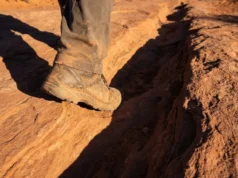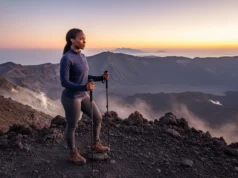In this article
Hiking in Switzerland is not merely a recreational activity; it is a cultural institution, a national pastime woven into the very fabric of the country’s identity. To find the best hiking trails in Switzerland, one must look beyond simple lists and embrace the essential knowledge of Swiss hiking culture—from decoding trail signage to mastering mountain hut etiquette. This definitive guide empowers dedicated hikers for the perfect hiking trip, covering strategic planning, a curated list of top hikes, a masterclass on local systems, and the code of responsible trekking to help you explore the Swiss Alps with the confidence and skill of a local.
Strategic Planning for Your Swiss Hiking Adventure
A successful Swiss hiking trip hinges on two critical decisions: when to go and where to base yourself. Aligning your adventure with the distinct alpine seasons and leveraging the country’s diverse regional hubs provides a strategic framework for the ultimate experience.
When to Hike: A Seasonal Guide to the Swiss Alps
Understanding the dynamic rhythms of the alpine environment is paramount for both safety and enjoyment. The quintessential season for Swiss summer hiking is from June to September, when the vast majority of high-altitude mountain trails are typically snow-free. During these months, the extensive network of Swiss Alpine Club (SAC) huts are fully staffed, making multi-day, hut-to-hut adventures on routes like the Via Alpina possible. However, afternoon thunderstorms are common, so an early start is always a wise strategy.
Many seasoned hikers consider Autumn (Late September – October) the most rewarding time. The weather is often more stable, summer crowds have thinned, and the landscape erupts in spectacular fall colors, with the golden larch forests of Zermatt and the Engadin providing a brilliant display. While many trails remain open, some high-altitude transport and huts may begin to shorten hours or close.
Spring (May – Early June) is a beautiful but deceptive season of transition. While valleys are beautiful with wildflowers and waterfalls, high-altitude trails remain snow-covered and dangerous. Planning for spring hiking during this period should focus on low-elevation trail routes. For those seeking a snow-covered experience, Switzerland also maintains a dedicated network of winter hiking trails, marked with distinctive pink signposts.
Choosing Your Base: Strategic Hubs for Hikers
The choice of a home base is a fundamental strategic decision that acts as a gateway to a specific regional network of trails and landscapes. The Bernese Oberland, with hubs like Interlaken and Grindelwald, is iconic “postcard” Switzerland. It’s best for first-timers seeking famous peaks of the Bernese Alps like the Eiger, Mönch, and Jungfrau, despite the crowds.
For more dramatic, high-altitude scenery, the Valais region, home to Zermatt and the iconic Matterhorn, is the destination for experienced hikers. It offers access to the dramatic Valais Alps and legendary treks like the Haute Route. To escape the crowds, Graubünden is Switzerland’s largest and most sparsely populated canton, offering a profound sense of wildness and solitude. It is home to the country’s oldest and largest protected area, the pristine Swiss National Park. Finally, Central Switzerland around Lucerne is ideal for beginners and families, known for accessible “house mountains” like Rigi and Pilatus that offer stunning lake-and-mountain panoramas over the lake district, with the distant Glarus Alps lining the horizon.
The 20 Best Hikes in Switzerland: A Curated Selection
With the planning framework in place, it’s time to explore the trails themselves. The following selection of top hikes in Switzerland showcases the incredible diversity of the Swiss landscape, categorized by difficulty and theme to help you strategically choose routes that match your fitness, style, and goals.
Iconic Hikes in Switzerland
Click on any trail to expand and see more details.
Best For
Iconic Panoramas
Key Features Seen
Eiger, Mönch, Jungfrau, Lake Thun, Lake Brienz
Best For
Families, Beginners
Key Features Seen
Eiger North Face, Jungfrau, Mönch
Best For
Alpine Lakes
Key Features Seen
Oeschinen See, Blümlisalp Massif
Best For
Accessibility, Lake Views
Key Features Seen
Lake Lucerne, Lake Zug, Pilatus
Best For
Photography, Reflections
Key Features Seen
Bachalpsee, Schreckhorn
Best For
Picturesque Scenery
Key Features Seen
Seealpsee, Säntis Massif, Aescher
Best For
Legendary Peaks
Key Features Seen
Eiger North Face, Lauberhorn
Best For
Dramatic Ridges
Key Features Seen
Lake Lucerne, Rigi, Pilatus
Best For
High-Alpine Lakes
Key Features Seen
Pizol Glacier, 5 Alpine Lakes
Best For
Glaciers, UNESCO
Key Features Seen
Aletsch Glacier, Matterhorn (distant view)
Best For
Unique Geology
Key Features Seen
Creux du Van Amphitheater, Ibex
Best For
Epic Trekking
Key Features Seen
Hohtürli Pass, Oeschinen See, Blümlisalp
Best For
Hut-to-Hut Trekking
Key Features Seen
Säntis, Schäfler, Ridge
Best For
Advanced Alpinism
Key Features Seen
Matterhorn, Mont Blanc Massif
Best For
Culture, Wine
Key Features Seen
Lake Geneva, Lavaux Vineyards (UNESCO)
Best For
Rivers, Valleys
Key Features Seen
Verzasca River, Roman Bridge
Best For
Forests, Thrills
Key Features Seen
Aletsch Forest, Suspension Bridge
The Quintessential Day Hikes (T1-T2: Beginner to Moderate)
Perfect for families, first-time alpine hikers, and anyone seeking iconic Swiss beauty without extreme physical exertion, these beautiful day hikes on well-maintained trails deliver maximum scenic reward for manageable effort. The Schynige Platte Panorama Trail offers a constant, jaw-dropping panorama of the Eiger, Mönch, and Jungfrau, with access via a historic cogwheel railway. Be sure to visit the charming Alpine Botanical Garden at the summit.
The Männlichen to Kleine Scheidegg trail is an exceptionally accessible hike and almost entirely downhill, yet it delivers some of the most direct and impressive views of the Eiger’s North Face. For photographers, this hiking trail is best in the morning when the sun illuminates the peaks. Finally, the Oeschinensee Lake Loop takes you to a breathtaking UNESCO World Heritage site, an intense turquoise-blue glacial lake backed by the towering Blüemlisalp massif. A gondola from Kandersteg significantly reduces the ascent, making this stunning scenery highly accessible.
The Most Rewarding Challenging Hikes (T3: Difficult Day Hikes)
For the fit, experienced hiker looking for a challenge, these T3 trails reward strenuous effort and significant elevation gain with unparalleled scenery. The Eiger Trail is an unforgettable experience, traversing directly beneath the mythic, imposing North Face of the Eiger. It offers a unique, humbling perspective on the sheer scale of the mountain; bring binoculars, as you may spot climbers on a clear day.
The Stoos Ridge Hike is a spectacular and highly dramatic ridge walk that feels like walking on the spine of the world, with dizzying drops from sheer cliffs and constant views of Lake Lucerne. The adventure begins with a ride on the world’s steepest funicular; trekking poles are highly recommended for stability. While the Stoos Ridge is a classic, the truly elite might set their sights on the legendary Hardergrat trail. The Pizol 5-Lakes Hike is a classic high-alpine tour in Eastern Switzerland that leads past five distinct and beautiful mountain lakes set against the backdrop of the Pizol Glacier.
[PRO-TIP] When hiking the Stoos Ridge, travel from Klingenstock towards Fronalpstock. This orientation keeps the most spectacular views of Lake Lucerne in front of you for the entire hike.
Epic Multi-Day Treks & Hut-to-Hut Adventures (T3-T4: Advanced)
Dedicated, experienced trekkers seeking big mountain hikes will find their objective in these Epic Multi-Day Treks & Hut-to-Hut Adventures. These are not simple walks but serious adventures requiring fitness, planning, and a spirit of adventure. Via Alpina (Stage 13) is one of the most challenging and spectacular stages of the trek across Switzerland, crossing the formidable 2,778-meter Hohtürli pass. This is a strenuous objective for very fit, sure-footed hikers with a good head for heights.
The Alpstein High Trail is a magnificent 3-day U-shaped hut hike through the Appenzell Alps, linking the region’s most famous sights. It serves as a perfect, self-contained introduction to the logistics and joys of hut-to-hut hiking in Switzerland. For the ultimate challenge, the Haute Route (Swiss Section) from Chamonix to Zermatt is a bucket-list long trail for the world’s most serious trekkers. This is a high-altitude expedition requiring excellent fitness, navigation skills, and planning that should begin months in advance.
Thematic Hikes: Beyond the Peaks
These hikes showcase the rich diversity of Swiss landscapes beyond the high-alpine environment, offering unique cultural and natural experiences. The Lavaux Vineyard Terraces offer a gentle footpath through a UNESCO World Heritage site overlooking Lake Geneva. Plan for stops at local wineries (caveaux) for a tasting of the region’s Chasselas wine.
The Sentiero Verzasca follows the emerald-green Verzasca River in Italian-speaking Ticino, famous for its crystal-clear water and polished white rock formations. While the Roman Bridge at Lavertezzo is iconic, hike further up the valley to find solitude and amazing scenery. The Aletsch Forest & Suspension Bridge hike on a forest path combines the tranquility of one of Europe’s oldest stone pine forests with the adrenaline of crossing a 124-meter-long suspension bridge over a deep gorge.
The Swiss Hiking Masterclass: How to Hike Like a Local
Knowing where to hike is only half the battle. To truly explore the Alps with confidence, one must master the how of Swiss hiking. The critical, practical skills that follow—from decoding trail signs to mastering hut etiquette—will transform you from a tourist into an informed, confident explorer.
Decoding the Trails: Mastering Swiss Signage & Difficulty Ratings
The Swiss hiking network is governed by a standardized, nationwide system of signage that is remarkably consistent and reliable. For novice hikers, understanding its language is the single most important safety skill. The system uses three primary color codes that correspond to the six official difficulty grades (T1-T6) from the Swiss Alpine Club (SAC).
Yellow signs mark T1 Hiking Trails (Wanderweg), which are clear, well-maintained paths with no risk of falling. White-red-white signs indicate T2-T3 Mountain Hiking trails (Bergweg), which can be narrow and steep, requiring sure-footedness in sturdy hiking boots and a head for heights. The most serious trails are marked with white-blue-white signs, designating T4-T6 Alpine Hiking routes (Alpinwanderweg).
Misinterpreting the difference between a white-red-white trail and a white-blue-white trail can have serious consequences. These alpine routes are often faint, cross steep scree or snowfields where hands are required for scrambling, and present significant fall hazards. They are for experienced hiker teams only, and you must check the trail status beforehand as current trail conditions can include impassable snowfields.
SAC Grade Hiking Difficulty Explained
Click on any grade to see a detailed breakdown of the terrain, required skills, and essential gear.
Terrain & Exposure
A clear, well-maintained path. Terrain is flat or gently sloped. No risk of falling.
Required Skills
None. Suitable for all walkers.
Essential Gear
Good walking sneakers or shoes.
Terrain & Exposure
A continuous, marked path, but can be narrow and steep in sections. Possible risk of slipping.
Required Skills
Sure-footedness is required. Elementary map reading skills, some hiking experience.
Essential Gear
Sturdy hiking boots with good tread.
Terrain & Exposure
Path may have exposed sections secured with ropes or chains. Hands may be needed for balance.
Required Skills
Sure-footedness, a good head for heights, basic alpine experience.
Essential Gear
Sturdy, ankle-supporting hiking boots. Trekking poles highly recommended.
Terrain & Exposure
Trail is often faint or non-existent. May cross steep scree slopes, snowfields, or simple glaciers. Significant fall hazard.
Required Skills
Advanced alpine experience, ability to assess terrain, confident navigation with map and compass.
Essential Gear
Mountaineering boots. May require an ice axe for snowfields.
Terrain & Exposure
Often exposed with precarious sections. Involves short, simple rock climbing sections. High risk of falling.
Required Skills
Mature alpine experience, elementary knowledge of rope and ice axe use.
Essential Gear
Mountaineering boots, rope, ice axe, and potentially crampons.
Terrain & Exposure
Extremely exposed, often on glaciers or involving difficult rock climbing. High risk of falling.
Required Skills
Mastery of technical alpine equipment and extensive experience in very difficult terrain.
Essential Gear
Full set of mountaineering and glacier travel equipment.
The SAC Hut Experience: A Hiker’s Guide to Staying in the Alps
The network of 153 mountain huts operated by the Swiss Alpine Club (SAC) is a cherished institution that enables multi-day trekking through the Alps. Founded in 1863, the SAC has made the high mountains accessible, but staying in a hut is a unique cultural experience with a specific set of rules. Reservations are mandatory, especially in high season, and can be booked via the central SAC portal.
The experience is rustic and communal, a core part of any multi-day hiking trip. Expect to sleep in a Matratzenlager (dormitory with side-by-side mattresses) and do not expect hotel amenities. Showers are rare, toilets are basic, and payment is often cash-only. The unwritten rules of etiquette are critical: hiking boots are never worn inside the main areas, and all guests must use their own personal sleeping bag liner (Hüttenschlafsack) for hygiene. Finally, respect Hüttenruhe (hut quiet time), as silence is expected after 10:00 PM.
The Responsible Hiker’s Code: Safety & Sustainability
The principles of responsible hiking in the Swiss Alps extend beyond general guidelines to include specific rules related to wildlife, agriculture, and mountain safety. Adhering to this code ensures the preservation of this fragile environment for generations to come.
Leave No Trace, The Swiss Way: Beyond the 7 Principles
While the seven core principles of Leave No Trace form an excellent foundation, Swiss customs dictate a more specific set of rules. The paramount rule is to stay on marked trails. This is not only for personal safety but is crucial for protecting fragile alpine flora and grassy meadows that can take decades to recover from damage. It also prevents trespassing on private agricultural pastures in the Swiss countryside.
You will frequently share trails with herds of cows. It is essential to give them a wide berth, move slowly, and never get between a mother cow and her calf. Always close any gates you pass through. Wild camping (Biwakieren) is a nuanced topic; while prohibited in national parks and nature reserves, it is generally tolerated for a single night above the treeline, provided you are discreet, arrive late, leave early, and adhere strictly to all Leave No Trace principles.
Mountain Safety & On-Trail Etiquette
Personal safety and cultural respect are two sides of the same coin in the Alps. Always check the weather forecast before setting out from the trailhead with a reliable source like the MeteoSwiss app, and be prepared to turn back if conditions deteriorate. A Swisspass can be invaluable for linking trailheads via train and PostBus. Be realistic about your fitness; the hiking time indicated on Swiss signposts is for fit locals and don’t include breaks. In an emergency, the helicopter mountain rescue number is 1414, operated by Rega.
A deeply ingrained custom is to greet fellow hikers on the trail with a simple, friendly “Grüezi” (in German-speaking areas), “Bonjour” (French), or “Buongiorno” (Italian). This small gesture fosters a sense of community. As a general rule of etiquette, the ascending hiker has the right of way over the descending hiker, as it is often more difficult to stop and restart momentum when going uphill. Using hiking poles can significantly improve your stability on steep descents and reduce strain on your knees.
Conclusion and Your Next Swiss Adventure
Switzerland offers what is arguably the most sophisticated and accessible hiking environment in the world. Its 65,000-kilometer network of trails is a fully integrated system supported by world-class transport, a unique alpine hut culture, and a deep-seated passion for the mountains. By providing not just the “where” but the essential “how” of Swiss hiking—from trail signage and hut etiquette to the principles of responsible trekking—this information equips you for your next perfect hiking trip amid gorgeous mountain scenery. You are no longer just a visitor but an informed participant.
The journey, however, does not end here. Each trail mentioned is a world unto itself, deserving of deeper exploration. Use this pillar post as your strategic launchpad for your next great Swiss adventure.
Explore our detailed guides on specific trails like the Eiger Trail or our complete itinerary for the Alpstein High Trail to plan your next trip!
Frequently Asked Questions about Hiking in Switzerland
How difficult is hiking in Switzerland?
The difficulty varies enormously, from simple T1 lakeside strolls to technical T6 ascents. The Swiss trail system uses a T1-T6 scale: T1 is easy, T2-T3 are mountain trails for fit hikers, and T4-T6 are challenging routes for experienced mountaineers only.
Do you need a guide to hike in Switzerland?
A guide is not necessary for most marked T1-T3 trails if you are an experienced hiker, as the marking system is excellent. However, hiring a certified mountain guide is strongly recommended for challenging T4+ alpine routes or for anyone new to alpine terrain.
What is the most famous hike in Switzerland?
While “famous” is subjective, top contenders include the Männlichen to Kleine Scheidegg for its Eiger views and the Eiger Trail for its legendary location. A third option is any high-altitude panorama trail, like the one at Rigi, for its accessible and stunning views.
When can you start hiking in the Swiss Alps?
The main season for mid-to-high altitude mountain trails runs from late June to early October. Trails above 2,000 meters often remain snow-covered and hazardous until July. It is crucial to check local conditions and trail status before any hike, especially in spring.
We are a participant in the Amazon Services LLC Associates Program, an affiliate advertising program designed to provide a means for sites to earn advertising fees by advertising and linking to Amazon.com. As an Amazon Associate I earn from qualifying purchases. We also participate in other affiliate programs. The information provided on this website is provided for entertainment purposes only. We make no representations or warranties of any kind, expressed or implied, about the completeness, accuracy, adequacy, legality, usefulness, reliability, suitability, or availability of the information, or about anything else. Any reliance you place on the information is therefore strictly at your own risk. Additional terms are found in the terms of service.





